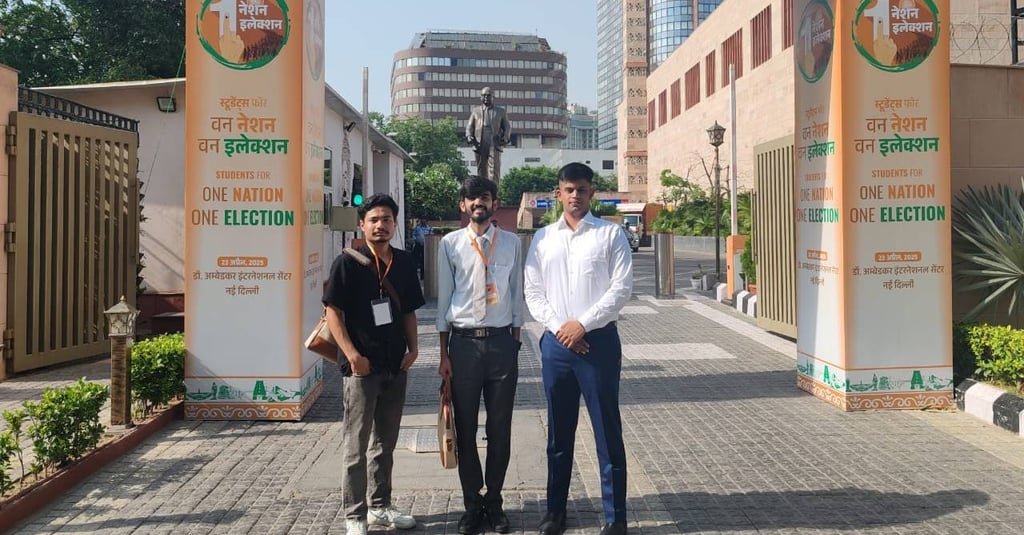Sikkim student leaders join national seminar on ‘One Nation, One Election’ in New Delhi
These three young leaders took an active part in the seminar.
LOCAL


Three student leaders from Sikkim proudly represented their state in a major national seminar on the topic of "One Nation, One Election," held on April 23 at the Dr. B.R. Ambedkar International Center in New Delhi. The event brought together student representatives from across the country to share their views and learn more about this important national topic.
The seminar was attended by students from every Indian state. It was designed as a space for discussion, learning, and exchange of ideas about how having all elections at the same time—both national and state—might affect India’s democracy, governance, and development.
The seminar also featured key national leaders. Union Minister of Agriculture, Shri Shivraj Singh Chouhan, and Union Minister of Education, Shri Dharmendra Pradhan, addressed the students. They spoke about how the idea of "One Nation, One Election" could bring stability, reduce costs, and allow governments to focus more on development than on frequent campaigning.
Representing Sikkim at this important event were:
Krishna Kumar Bahun, a student of Mass Communication at Sikkim University, originally from Gyalshing.
Lakshya Shaurya Agrawal, who studies at Ramjas College under Delhi University and comes from Gangtok.
Samir Chettri, a B.Ed student studying in Malda, West Bengal, who hails from Mangsari in Soreng district.
These three young leaders took an active part in the seminar. They listened to different opinions, shared their thoughts, and learned a lot about how such a policy might work and what it means for India’s future. They also had the opportunity to interact with senior policymakers, which gave them a better understanding of how national decisions are made.
The seminar was not just about speeches. It was also about students from different states getting to know each other, exchanging ideas, and seeing how young people can take part in the democratic process. Many of the participants said they went back with a clearer idea of the challenges and possible advantages of having synchronized elections.
